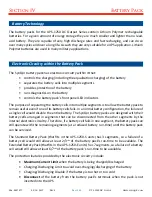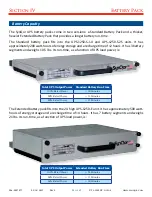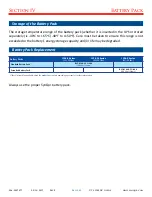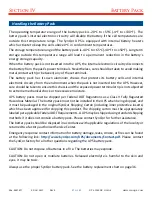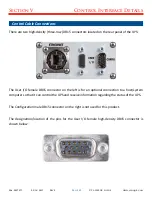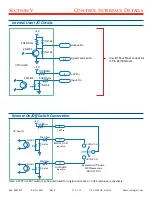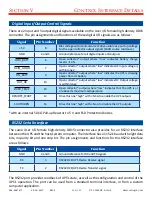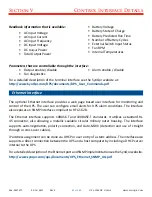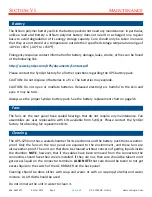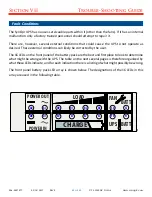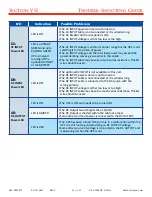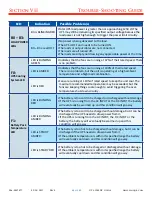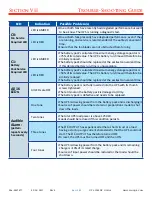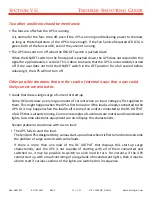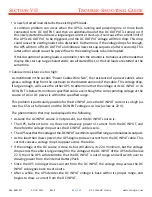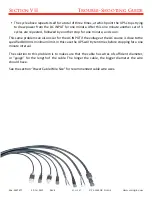
Section VII
Trouble-Shooting Guide
006-0007097 02/14/2019
Rev E
48 of 52
UPS-1250DC Guide www.synqor.com
▪ A newly started load disturbs the existing UPS loads.
A common problem can occur when the UPS is running and powering one or more loads
connected to its DC OUTPUT, and then an additional load of the DC OUTPUT is turned on. If
this newly started load draws a large surge current at start-up, it can cause the current limit of
the UPS’s DC OUTPUT to be triggered, and the DC OUTPUT voltage will then drop. This drop
could cause the existing loads to be disturbed. Furthermore, if the voltage drops far enough,
the UPS will turn off it DC OUTPUT and initiate a new start-up sequence (after 4 seconds). This
latter action would cause the power flow to the existing loads to be interrupted.
If this disruption of existing loads is a problem, then the solution is to make sure the loads that
display this start-up surge characteristic are all started first, or that all loads are started at the
same time.
• Cable wire resistance is too high:
As mentioned in the section “Power Cables Wire Size”, the resistance of a power cable’s wires
gives a voltage drop from the upstream to the downstream end of the cable. This voltage drop,
if large enough, will cause the either UPS to determine that the voltage at its AC INPUT or its
DC INPUT is below its minimum specified value, even though the corresponding voltage at the
source of AC or DC power is within the specified range.
This problem is particularly possible for the DC INPUT, since the DC INPUT current is so high (as
much as 65 A at full power) and the DC INPUT voltage is so low (as low as 22 V).
The phenomenon that may be displayed is the following.
▪ Assume the AC INPUT source is not present, but the DC INPUT source is.
▪ The UPS, before it turns on, does not draw any power or current from the DC INPUT, and
therefore the voltage drop across the DC INPUT cable is zero.
▪ The UPS sees that the voltage at the DC INPUT is within its specified range, and enables its outputs.
▪ As the load then draws power, the UPS begins to draw current from the DC INPUT cable. This
current causes a voltage drop to appear across the cable.
▪ If the voltage at the DC source is close to, but still above, its 22 V minimum, but the voltage
drop across the cable is large enough for the voltage at the DC INPUT of the UPS to fall below
22 V, then the UPS will determine that the DC INPUT is out of range and will switch over to
drawing power from the internal Battery Pack.
▪ Since the UPS no longer draws current from the DC INPUT, the voltage drop across the DC
INPUT cable goes back to zero volts.
▪ After a while, the UPS decides the DC INPUT voltage is back within its proper range, and
begins to draw a current from the DC INPUT.

